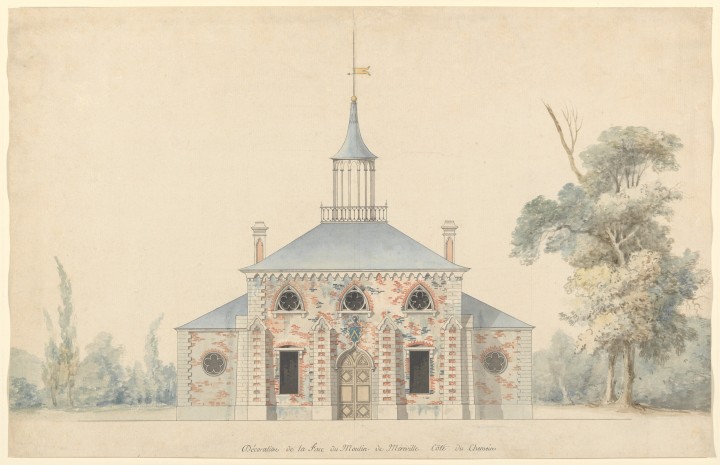Lecture | Basile Baudez on Color in Architectural Drawing

François-Joseph Bélanger, An Elevation for the Projected Mill at Méréville, ca. 1786 (New York: The Metropolitan Museum of Art, Gift of Mrs. Charles Wrightsman, 2003)
◊ ◊ ◊ ◊ ◊
Basile Baudez (Paris-Sorbonne University), Histoire de la couleur dans le dessin d’architecture, XVIe–XIXe siècles / History of Color in Architectural Drawing, 16th–19th Centuries
Centre André Chastel, Paris, 11 May 2016
Architectural historians have focused on the history of drawing as one of project design tools. By applying the methods of art history, this paper traces color as a key player in the long history of rivalry and exchange between European traditions in architectural drawing and practice. While Italian Renaissance drawings were largely monochrome and developed their conventions under pressure from engravers, the seventeenth-century European situation is characterized by a contrast between a colorful German and Dutch world around architect-painters’ designs and a still largely monochrome tradition in Italy and England. At the end of Louis XIV’s reign, French architects adopted a series of color conventions taken from the engineers, largely for informational purposes. In the middle of the eighteenth century, however, a color revolution took place, one in which a new generation of architects who were working alongside painters developed a wide chromatic range that was no longer limited to informing the worker but to persuading academic juries and gain commissions. This eighteenth-century French employment of color laid the foundation for Beaux-Arts architectural drawings in the first half of the nineteenth century, at a moment when English architectural drawings, too, adopted color in response to the English watercolor movement. Wednesday, 11 May 2016, 6:30–8:00pm, Galerie Colbert, 2 rue Vivienne, 75002 Paris, salle Ingres (2nd floor).




























leave a comment